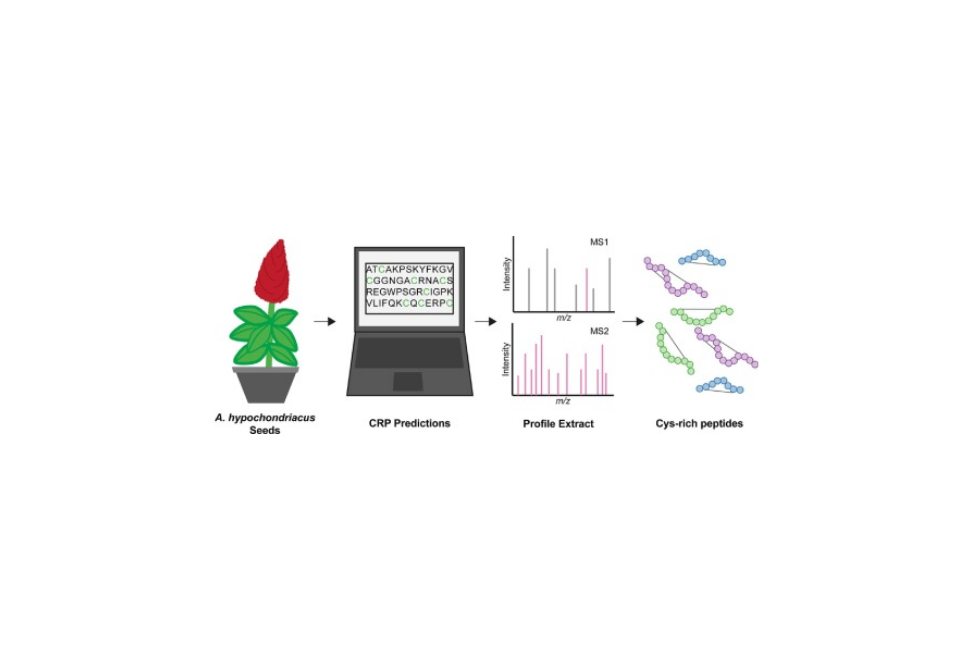Amaranthus hypochondriacus seeds as a rich source of cysteine rich bioactive peptides
Abstract
Amaranthus hypochondriacus is a nutritious alternative grain native to Central and South America. Increased interest in the impact of A. hypochondriacus on the human body has driven characterization of bioactive secondary metabolites. The seeds are known to contain bioactive small molecules but little is known regarding endogenous peptides. Cysteine-rich peptides (CRPs) in foodstuffs are particularly relevant because they are stabilized by disulfide bonds enhancing resistance to digestion. Here, in silico predictions, proteomics, and simulated gastrointestinal digestions are leveraged to identify digestion resistant CRPs within A. hypochondriacus seeds. Thirteen in silico predicted CRPs were detected in a seed extract providing evidence for the translation of five CRP families. Mature forms of six CRPs were characterized via top-down proteomics revealing multiple post-translational modifications. All six peptides demonstrated resistance to simulated gastrointestinal digestion, suggesting that A. hypochondriacus CRPs may exhibit bioactivity after consumption and should be prioritized for further characterization.
Citation
Tessa B. Moyer, Wyatt J. Schug, Leslie M. Hicks,
Amaranthus hypochondriacus seeds as a rich source of cysteine rich bioactive peptides,
Food Chemistry, Volume 377, 2022, 131959, ISSN 0308-8146,
https://doi.org/10.1016/j.foodchem.2021.131959.
(https://www.sciencedirect.com/science/article/pii/S0308814621029654)


